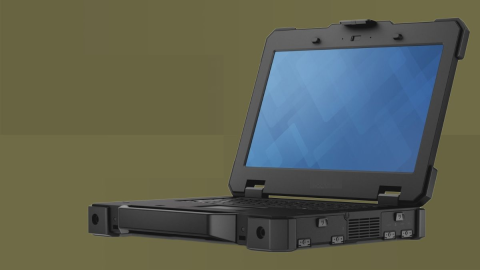PCB Design for Hyperspectral Sensor and Imaging Systems

What was once confined to the most advanced aerospace applications is now commonplace enough to be found in our everyday lives. Insulation, CCDs, air purifiers, and other technologies wouldn’t be possible without a robust space program in the 1960s and 1970s. One less well-known technology that deserves such attention is remote sensing, which has been used casually and for scientific research since the first American and Russian space flights.
Remote sensing at microwave wavelengths has been used on satellites since the 1970’s for weather prediction, but related remote imaging and analysis techniques have evolved since that time. Two of these related techniques are multispectral imaging and hyperspectral imaging. As a more powerful photonics technique, hyperspectral imaging can provide significantly more information than microwave remote sensing in a number of applications.
Multispectral vs. Hyperspectral Imaging
The difference between these two types of systems is in their spectral resolution. Both imaging techniques gather images of a scene or target at a range of wavelengths, just like a normal camera. However, images are gathered in multiple wavelength ranges, and the differences in the intensity in different wavelength ranges can tell you some important information about the target. Multispectral imaging uses a small number of broad wavelength bands, whereas hyperspectral imaging uses a very large number of very narrow wavelength bands. The two techniques can provide the same level of spatial resolution, yet hyperspectral imaging provides much greater spectral resolution.

These systems use a light source to illuminate a target, and reflected/scattered light is then captured with a detector. This requires using a broadband light source (e.g., multiple LEDs or a xenon lamp), or a broadband microwave emitter. Boards for multispectral and hyperspectral imaging systems will typically be part of a larger system that is integrated in a satellite, aircraft, UAV, or other device. UAV hyperspectral imaging systems are becoming more popular in applications outside of defense, including agriculture, wilderness monitoring, geometallurgy, pollution/eutrophication monitoring, finely distributed temperature measurements, spotting undeclared nuclear assets, and more in the future.
Example infrared hyperspectral imaging measurement and data visualization. Each pixel in the image contains an infrared spectrum within a particular frequency band, and each layer in the cube above corresponds to a different frequency band. The output in the image is simply an integral over the spectrum displayed in an RGB scale.

Design and Layout
Hyperspectral imaging systems operate in the microwave regime or as optical systems. Microwave multispectral and hyperspectral imaging are still in use in a variety of applications, especially when involving long-range remote sensing measurements. Optical hyperspectral imaging is becoming more popular when very high resolution measurements are required.
The particular design and layout strategies for different hyperspectral systems depends on whether you are building an optical or microwave system. Each type of system is slightly different. Although optical systems are more advanced, their applications are somewhat narrower, yet the design and layout of these systems is less demanding. In contrast, a wideband microwave hyperspectral imaging system can get quite complicated.
Optical Hyperspectral Imaging
Optical hyperspectral imaging systems operate anywhere from the visible to long-wave infrared region of the electromagnetic spectrum. They do not need to operate at fantastically high clock rates, and these systems tend to use low frame rates (100s of FPS). If averaging at each wavelength is used, then your acquisition time will be somewhat longer as more frames are captured and processed by the system. Detectors for these systems are commercially available, and the internal circuitry does not run at extremely fast edge rates, eliminating many of the problems that are seen in super-high speed systems.
However, these systems will use CCD or CMOS-based line scan detectors. In addition, advanced systems may use a mechanical modulator element connected to a small motor to separate different wavelengths, creating a potential problem with low frequency conducted EMI. In the case of mechanical modulator-based hyperspectral imaging systems, the noise from any motor-driven element resembles cooling fan noise. The table below shows a comparison of CCDs and CMOS sensors for use in hyperspectral imaging.
The noise issue is important as CCD and CMOS sensors used for hyperspectral imaging can be susceptible to noise. These devices are inherently mixed-signal, requiring sufficient isolation from other sections of the board and shielding. A stackup that includes at least four layers is normally recommended for these sensors. You can generally provide sufficient shielding by placing a ground plane below the surface layer containing the sensor.
You’ll also need to follow some of the same practices that are used with LIDAR laser diode driver circuits to prevent excessive ripple on the output from your light source. However, you won’t need to worry about highly accurate time-to-digital converter circuit layout unless you are gathering range data with alongside spectral data. Some commercial drone systems for crop monitoring include these capabilities as they provide plant health measurements alongside plant height measurements.
Microwave Hyperspectral Imaging
These systems can be difficult to design, depending on the range of frequencies you’re using, and can run anywhere from 1 GHz to 1 THz, which happens to correspond to the detection range of most microwave radiometers. They should be laid out in the same manner as boards for chirped radar modules. The microwave portion of the board may work best when placed on a ceramic or high frequency laminate, depending on the frequency range and application. An aluminum core or ceramic substrate for the microwave portion is quite useful in harsh environments, such as in an aircraft.
Because you’ll be using some digital processing, do your best to section out different portions of the board and engineer your return path to prevent interference between different sections of the board. As microwave remote sensing applications can involve emissions up to 100’s of GHz, you’ll need to ensure sufficient isolation between analog and digital portions of the board. This all starts with the right stackup and floorplanning.
Whether you are working with an optical or microwave hyperspectral imaging system, you need the right PCB design and layout software that is adaptable to any application. Altium Designer ® gives you all the important CAD tools you need for hyperspectral imaging design and much more in a single program. You’ll also have access to powerful simulation and analysis features, data management tools, and collaboration features that you won’t find in other PCB design applications.
Now you can download a free trial of Altium Designer and learn more about the industry’s best layout, simulation, and production planning tools. Talk to an Altium expert today to learn more.








